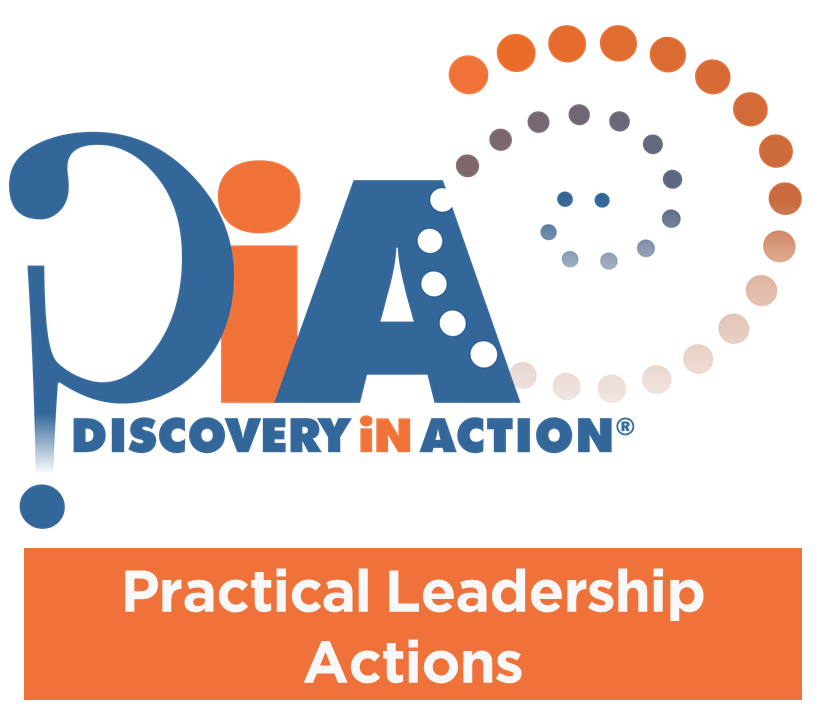Practical Leadership Actions #6: How do I create meaning and purpose?
 We have recently developed a series of practical leadership actions responsive to major themes that have emerged through our work with over 700 Discovery in Action® (Leading People) program participants. We have observed six major themes that have consistently emerged as participants have grappled with the question: When do people perform at their best? These themes are around people feeling supported, valued and safe; creating a ‘team environment’; supporting learning and growth; empowering staff and building autonomy; ensuring clarity of roles and expectations; and creating meaning and purpose. Our participants have also articulated many practical leadership actions they take to address these issues.
We have recently developed a series of practical leadership actions responsive to major themes that have emerged through our work with over 700 Discovery in Action® (Leading People) program participants. We have observed six major themes that have consistently emerged as participants have grappled with the question: When do people perform at their best? These themes are around people feeling supported, valued and safe; creating a ‘team environment’; supporting learning and growth; empowering staff and building autonomy; ensuring clarity of roles and expectations; and creating meaning and purpose. Our participants have also articulated many practical leadership actions they take to address these issues.
Over 6 newsletters we are featuring a set of Practical Leadership Actions relating to each of these themes, generated through our exposure to on-the-ground leaders as well as various examples from blogs, articles and books. These actions are not provided as definitive or comprehensive lists, but a working set of ideas that we are sharing broadly. There is a minimum of at least 25 potential actions relating to each of these themes – so plenty of ideas that may spark your thinking and your day-to-day leadership practice!
So our final featured practical actions are around…
How do I create meaning and purpose?
The importance of purpose and meaning in people’s work and their lives has gained significant prominence in recent years. Numerous authors and academics, including Dr Martin Seligman in his PERMA (Positive Emotion, Engagement, Relationships, Meaning, Achievement) model of wellbeing, Daniel Pink (drivers of motivation: Purpose, Autonomy, Mastery), Simon Sinek (the power of ‘why’ in the Golden Circle and Teresa Amabile (the ‘progress principle’ – making progress in meaningful work) have written extensively about purpose and meaning. When people at work have a clear understanding of the ‘why’ of their work and it strongly aligns to their personal values, capabilities and aspirations it is likely to result in high levels of energy, commitment and motivation. On the flip side, where people don’t strongly believe in the value of the work they are doing they are more likely to be just ‘going through the motions’ at work. Leaders have a role in really helping people ‘connect’ with their work. The challenge for leaders is being attentive to this and consistently having conversations that generate this connection to purpose. We have created a simple one page sheet which contains 30 different ideas for action that leaders can take. These actions are organised around the following 5 overarching strategies to ensure there is clarity of roles and expectations:
- Understand individuals’ goals and aspirations – leaders who make the effort to understand what people are hoping to achieve at work gain the double benefit of building a positive relationship through that demonstration of care as well as being well placed to create opportunities to help people achieve their aspirations. You might our motivation card game a useful tool to help with this.
- Align individual aspirations with organisational goals – working with individuals and teams to set goals using language that makes a clear connection with their personal ‘why’ and aspirations strengthens motivation and stimulates discretionary effort. You may want to consider having more conversations with people about the ‘why’ of their work, rather than the ‘how’.
- Reinforce the importance of people’s work – leaders who provide opportunities for people to contribute ideas, opinions and suggestions as well as regularly acknowledge the contribution people are making to higher order outcomes boosts morale and performance as people feel valued and respected in the workplace.
- Provide challenges and help people make progress – stretching people with achievable challenges whilst supporting them to make progress in their endeavours really helps tap into people’s inner purpose and drive. The ‘progress principle’ is based on the finding that what is most important to people’s mood, motivation and perceptions of the workplace is making progress in meaningful work.
- Recognise the contribution that individuals are making – helping individuals and teams to see clearly how their day-to-day work is making a contribution to long-term goals and purpose demonstrates the impact of their work and enables people to find true meaning in their work. This can generate real energy and commitment.
So while there is a list of possible actions for each of these 5 strategies contained in our one-page sheet, there may be many other actions, particularly relevant in your context, that you may also identify. Of course, we’d be interested in other ideas for action that people have implemented!
This practical ideas list might be used in a variety of ways:
- Reflect and review on your practice – do I have coverage across all these strategies?
- Engage with your people – would they like to see more of some of these actions?
- Select one or two actions from the list that you’d like to experiment more with over the next few months
Good luck and let us know of any other actions we can add to our list!
